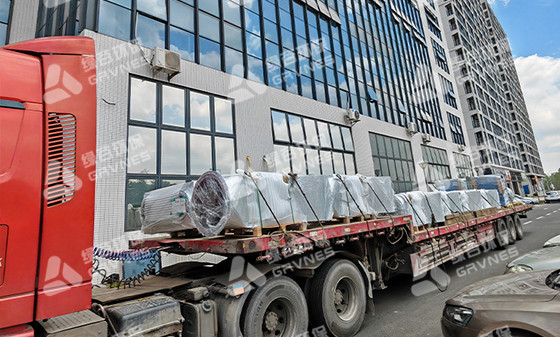With the continuous development of the social economy and the acceleration of industrial processes, diesel generator sets play an important role in multiple fields such as data centers, electricity, and industrial manufacturing. However, in the process of exhaust emissions, there will be a large amount of harmful substances such as particulate matter, nitrogen oxides NOx, carbon monoxide, and hydrocarbons, which pose a serious threat to the environment and human health. As a professional exhaust treatment enterprise, Green Valley Environmental Protection provides efficient and environmentally friendly exhaust treatment solutions for high-power generator sets of various wattages with advanced technology and rich experience.
Green Valley Environmental Protection provides one-on-one customized services to address the differences in exhaust composition and emissions generated by different power generators during operation. The exhaust treatment plan covers a variety of efficient technologies, including regenerative particulate filter (DPF), diesel oxidation catalyst (DOC), selective catalytic reduction (SCR), etc. These technologies are effectively integrated to meet the needs of different power generators.
The regenerated particle trap of Green Valley Environmental Protection uses advanced 316L alloy metal felt from France as the filtering material, which has the characteristics of high temperature resistance, corrosion resistance, and high permeability. It can effectively remove particulate matter PM from exhaust gas, with a purification efficiency of over 97%. Its unique regeneration function can restore the performance of the filter element through simple water washing, with easy operation and low maintenance costs.
The DOC diesel oxidation catalyst from Green Valley Environmental Protection removes CO, HC, and a small amount of carbon particles from exhaust gas through catalytic oxidation.
The diesel oxidation catalyst and particulate matter combination system (DOCF) of Green Valley Environmental Protection integrates the diesel oxidation catalyst DOc and diesel particulate trap DPF into one device. It combines the functions of DOC and DPF, uses DOC to oxidize carbon monoxide CO, hydrocarbons HC, and some nitrogen oxides NOx in the exhaust gas, and then captures the particulate matter in the exhaust gas through DPF. When DPF needs to be regenerated, the nitrogen dioxide NOx and other substances generated by DOC react with the particulate matter in DPF to oxidize and remove it, reducing particulate matter emissions, improving the efficiency and reliability of the entire exhaust gas treatment system, reducing space occupation and costs.
The three-way catalytic converter (TWC) of Green Valley Environmental Protection can effectively remove CO, HC, and NOx, and is the most important external purification device installed in the exhaust system of real estate engines. It can promote the chemical reaction of harmful gases, thereby achieving exhaust purification and reducing pollution to the atmospheric environment.
Green Valley Environmental Protection’s selective catalytic reduction (SCR) system reduces nitrogen oxides (NOx) into harmless N2 and H2O under specific temperature and catalyst conditions, with a purification efficiency of over 98%. The SCR denitrification system also has remote control, data acquisition, and transmission functions, which can effectively reduce the problem of ammonia escape.
The exhaust treatment system of Green Valley Environmental Protection is easy to install and can be directly installed on the exhaust pipe of the engine, without occupying extra space and reducing installation costs. The intelligent control system reduces manual operation errors and improves operational efficiency. Green Valley Environmental Protection provides efficient and environmentally friendly exhaust gas treatment solutions through various wattage high-power generator sets, which can not only help customers reduce environmental pollution emissions, but also enhance their green image. Green Valley Environmental Protection will continue to increase research and development investment, improve technological performance, explore innovative applications in more fields, and contribute to achieving the goals of carbon peak and carbon neutrality.
Post time: Jul-11-2025

